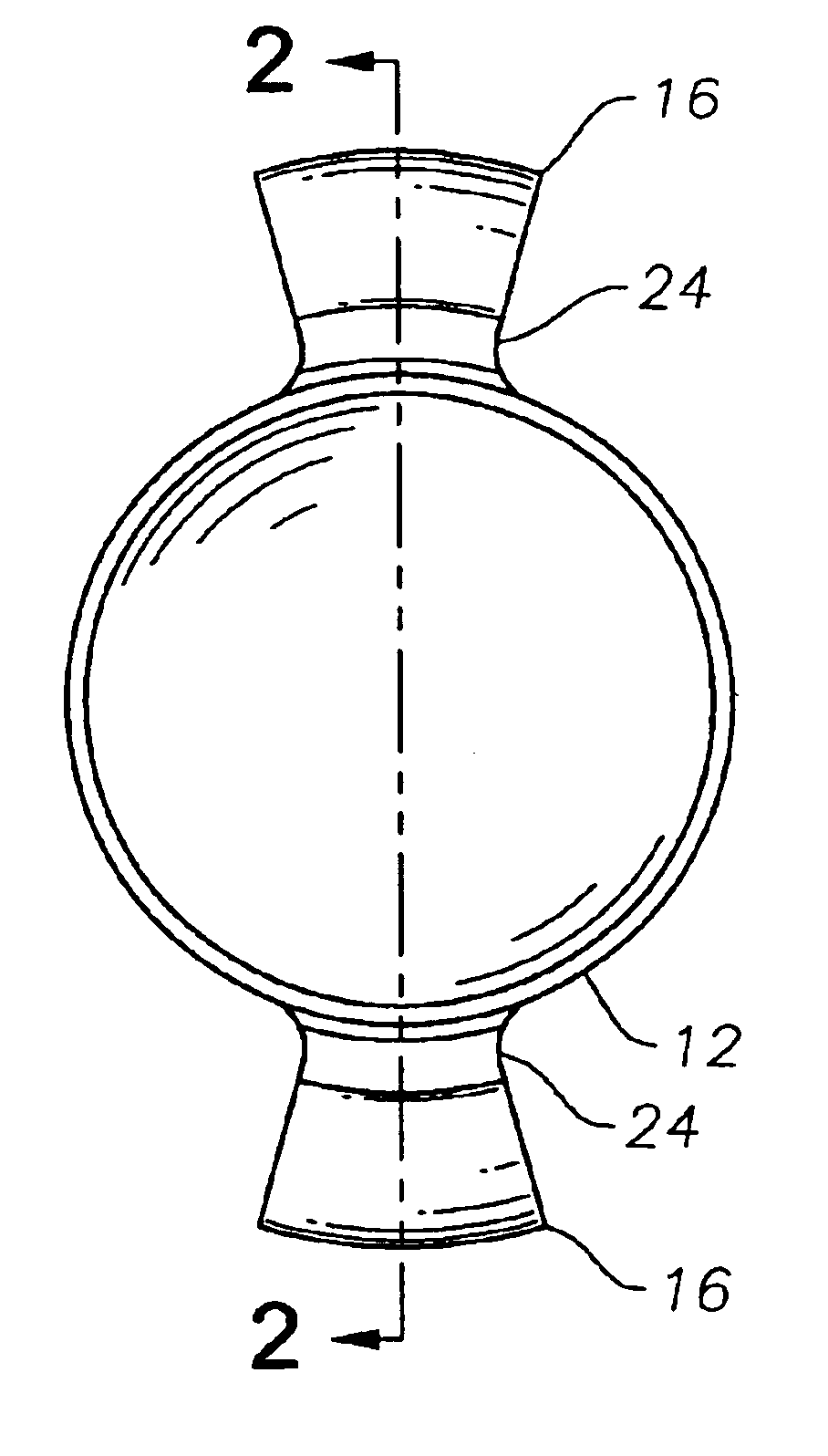Accommodative intraocular lens
a technology of intraocular lens and iol, which is applied in the field of intraocular lens, can solve the problems of deteriorating vision, increasing the difficulty of use, and natural lens prone to flattening
- Summary
- Abstract
- Description
- Claims
- Application Information
AI Technical Summary
Benefits of technology
Problems solved by technology
Method used
Image
Examples
Embodiment Construction
[0046]As best seen in FIGS. 1-5 and 10, lens system 10 of the present invention generally consists of posterior optic 12 and anterior optic 14. Optic 12 is preferably formed in any suitable overall diameter or length, for example, around 12 millimeters, for implantation in the posterior chamber. Optic 12 preferably is made from a soft, foldable material that is inherently resistive to the formation of PCO, such as a soft acrylic. Optic 14 preferable is made from a soft, foldable material such as a hydrogel, silicone or soft acrylic. Optic 12 may be any suitable power, but preferably has a negative power. Optic 14 may also be any suitable power but preferably has a positive power. The relative powers of optics 12 and 14 should be such that the axial movement of optic 14 toward or away from optic 12 should be sufficient to adjust the overall power of lens system 10 at least one diopter and preferably, at least three to four diopters, calculation of such powers of optics 12 and 14 bein...
PUM
 Login to View More
Login to View More Abstract
Description
Claims
Application Information
 Login to View More
Login to View More - R&D
- Intellectual Property
- Life Sciences
- Materials
- Tech Scout
- Unparalleled Data Quality
- Higher Quality Content
- 60% Fewer Hallucinations
Browse by: Latest US Patents, China's latest patents, Technical Efficacy Thesaurus, Application Domain, Technology Topic, Popular Technical Reports.
© 2025 PatSnap. All rights reserved.Legal|Privacy policy|Modern Slavery Act Transparency Statement|Sitemap|About US| Contact US: help@patsnap.com



